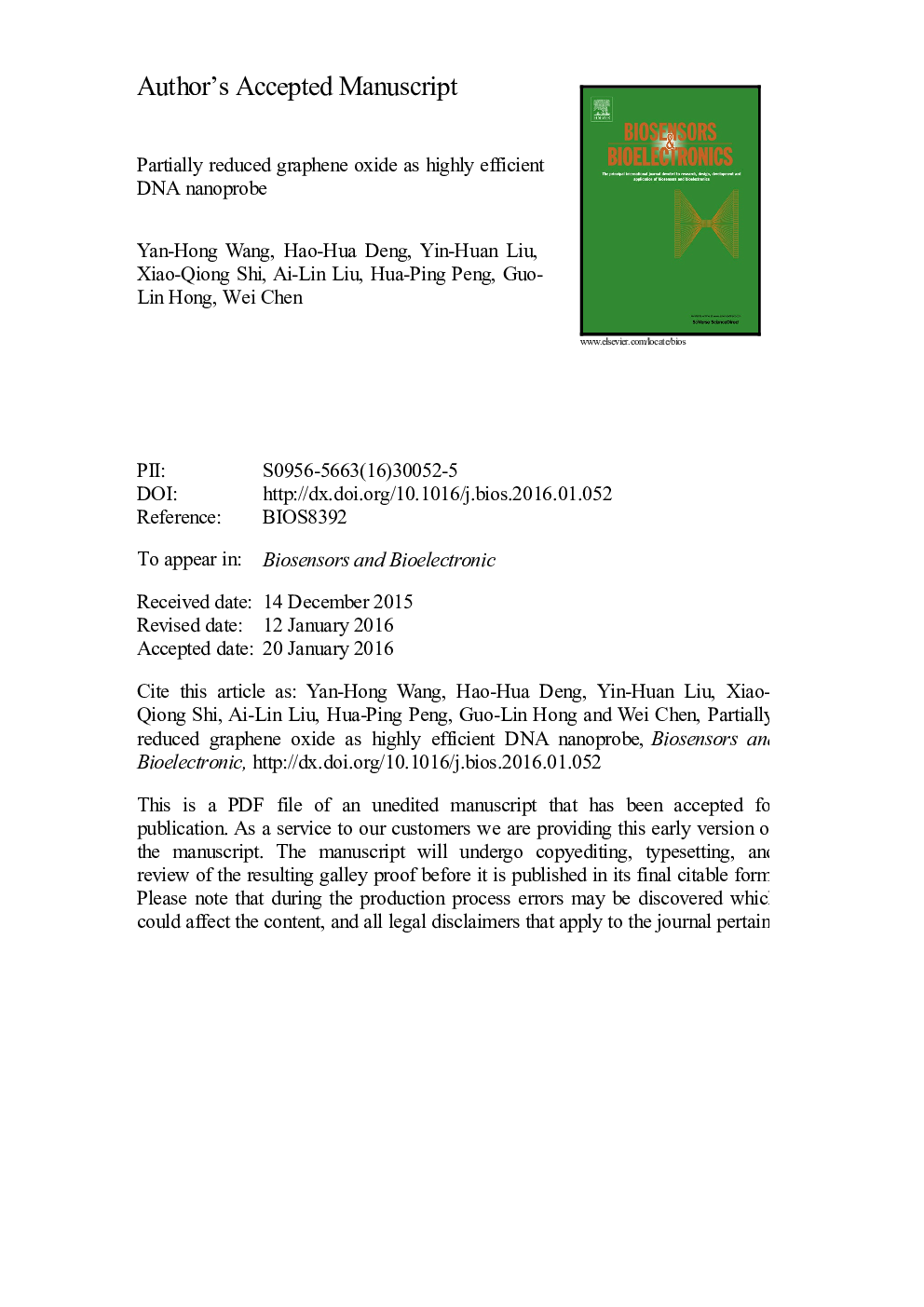| Article ID | Journal | Published Year | Pages | File Type |
|---|---|---|---|---|
| 7230677 | Biosensors and Bioelectronics | 2016 | 17 Pages |
Abstract
This work investigates the effect of reduction degree on graphene oxide (GO)-DNA interaction and the fluorescence quenching mechanism. Partial reduced graphene oxide (pRGO), which maintains well water-dispersibility, is synthesized using a mild reduction method by incubating GO suspension under alkaline condition at room temperature. The fluorescence quenching enhances with the restoration degree of sp2 carbon bonds and follows the static quenching mechanism. The binding constant values imply that pRGO has much stronger affinity with ssDNA than GO. Utilizing this highly efficient nanoprobe, a universal sensing strategy is proposed for homogeneous detection of DNA. Compared with the reported GO-based DNA, this present strategy has obvious advantages such as requirement of low nanoprobe dosage, significantly reduced background, fast fluorescence quenching, and improved sensitivity. Even without any amplification process, the limit of detection can reach as low as 50Â pM.
Related Topics
Physical Sciences and Engineering
Chemistry
Analytical Chemistry
Authors
Yan-Hong Wang, Hao-Hua Deng, Yin-Huan Liu, Xiao-Qiong Shi, Ai-Lin Liu, Hua-Ping Peng, Guo-Lin Hong, Wei Chen,
